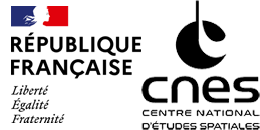Propulsion & Aerothermodynamics
The COMET, or Community of Experts, is like an “open circle of knowledge”.
For this reason, it is an excellent means of communication and way of distributing information, a showcase for you to present your developments without any major restrictions.
COMETs encompass the basic disciplines of space techniques and relevant cross-functional fields
In this context, the P&A COMET for “Propulsion & Aerothermodynamics” has been created at the CNES. Its objective is create favourable conditions for innovation and exchange by making it possible to bring together the communities affected by the themes dealt with by the CCT. The latter encompasses three major fields:
- Electric propulsion
- Aerothermodynamics
General presentation
The P&A COMET focuses on two themes within an aerospace context that is both highly regulated and in a state of rapid evolution.
Electric propulsion
- Appearance of “fully electric” GEO platforms.
- Emergence of a LEO/MEO market (constellations, Galileo-NG).
- Significant prospects for nanosat applications.
Aerothermodynamics
- Atmospheric re-entry: regulations on debris re-entry (LOS).
- Exomars project context: ICOTOM instrument (CNES) and thermal protection (ADS).
The P&A COMET spectrum includes a large range of activities, but there are many synergies between the three themes.
- De-orbiting and controlled re-entry
- Passivation of fluid reservoirs (explosion of reservoir if not passivated).
- Behaviour of materials at high temperatures.
- Particular issues linked to certain components (titanium reservoir).
- Shared physics (e.g.: plasma in electric propulsion and aerothermodynamics)
 Aerothermodynamics Group
Aerothermodynamics Group
The aerothermodynamics theme covers a wide spectrum of issues linked to controlled or uncontrolled atmospheric re-entries of bodies (meteorites) and space vehicles (launchers, satellites).
These issues involve a significant number of disciplines and phenomena among which we can include: heat transfer, fluid flow on different regimes, thermomechanical fragmentation of structures, trajectory and attitude calculation, etc.
It is also envisaged that the aerothermodynamics theme of the P&A COMET will cover end-user and application aspects. In a general manner, aerothermodynamic tools are used to carry out risk analysis associated with atmospheric re-entry and to ensure compliance with regulations and laws (French Space Operations Act or LOS). Predictive calculation codes are also used to develop new upstream solutions (during the design phase) which make it possible to fully reduce the potential ground impact risks by ensuring the complete ablation of the body before it reaches the ground (D4D: Design for Demise).
 Electric Propulsion Group
Electric Propulsion Group
Electric propulsion is at a turning point in its history. In fact, it is now largely used for commercial satellites to carry out North-South and (NSSK) orbit control and maintenance. However, the significant reduction in propellant that this system enables, associated with recent in-flight successes, opens up new perspectives that have been inconceivable to date. In fact, electric propulsion is not only relevant for position maintenance operations, but also for carrying out the transfer of geostationary satellite orbit, which represents a considerable proportion of the market.
What is more, the future requirements in the nanosatellite market (CubeSats) widen the scope of electric propulsion technologies. The guidance and control of the trajectory of small satellites require compact and robust electric propulsion systems. This is why innovative and efficient propulsion systems are needed and new developmental approaches should be explored.
This turning point demands profound reflection and consideration of the breakthrough and opportunities afforded by electric propulsion:
- In the short term, the development of propulsion sub-systems needs to be adapted to reflect new requirements (GEO, telecoms, etc.) and thereby boost competitiveness.
- In the medium term, new product lines need to reflect increasingly diverse requirements (LEO, constellations, nanosat, etc.),
- In the long term, breakthroughs need to be made for increasingly ambitious missions (distant exploration).

